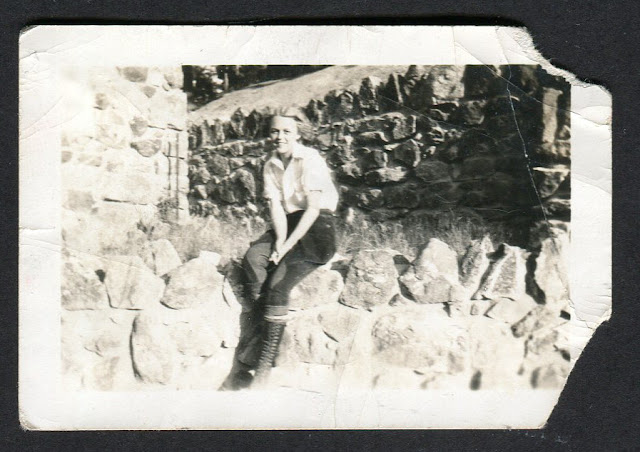I love this picture because it reminds me of an elementary
school writing assignment. Remember when your teacher would give you the
starting sentence and your job was to make up the rest of the story, with all
of its details and subplots? Your imagination was given free reign with only a
little guidance to get you started. To me, this picture is the same thing.
Based upon what the photographer has decided to include in the frame this
appears to be a family vacation. Yet there are numerous figures included in the
scene and they are each doing something different. Looking at this image your
imagination is free, and even encouraged, to ponder what is going on here. The
father appears to be the figure cropped on the far right surveying this busy
scene. Included with just enough of his figure to draw our eye to him, and
peaking in at the edge of the frame he seems to lead our eye into the action. This
placement of the father provides a great natural starting point for our
interpretation of the photograph. From him we see presumably the doting mother
placing her son’s shoes in an area to ensure they are kept from getting wet.
Then there are the boys readying themselves for whatever waterborne adventures
await. Finally we have the eldest members of this motley crew looking for
who-knows-what in the woods. With all of these side stories taking place in one
complete scene the photographer here has captured the ultimate family
photograph.
The classic family line-up photograph, like a police line-up
of suspects, tells no story. Personalities and character are only visible in
the clothing, accessories and faces of those in the scene because it is simply
a posed photograph. We are not given a sense of what the family members are
like as real people. The vintage picture presented here includes all of the
generations of a family in a single photograph, just like the traditional
line-up, but in a well-composed scene such as this we get to see the real-life
personalities of each person. Each character is true to his or her personality
and a real sense of who they were at this point in their lives is captured on
film. Isn’t that what we really want from multi-generational family photos?
So, how can you capture something like that in your own family
photos? First, and most important, you need to frame in your lens a scene which
captures different generations interacting. This likely entails standing far
enough away/using a wide-angle lens so that enough figures will be visible in
the scene. Next you can look for ways to add visual interest to the frame. Here
the photographer has added interest by including a cropped view of the father
on the far edge of the scene (a cropped figure at the edge of a scene strikes
the eye as unusual and makes the work instantly engaging) and by taking a unique
point of view. While perhaps not obvious at first glance this scene has been
photographed from a low, but level, point of view. Instead of looking down upon
this scene (as we would if the photographer simply held the camera at regular
adult eye level) we are facing the action from a child’s point of view. By
choosing a view from roughly the father’s hip level we see the scene as though
from a child’s eyes. Although it is likely that this photograph was actually
taken by a child this perspective can add a neat effect to any of your pictures
if you simply take the time to bend down to compose a scene. If you take these
suggestions into account and focus on spontaneity your family pictures are
likely to go from the stiff, uninviting pictures that everyone hates sitting
for anyway to rich, lively and diverse family action scenes such as this that
will be a pleasure to look at for years to come.





